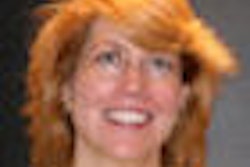Editor's note: Helaine Smith's column, The Mouth Physician, appears regularly on the DrBicuspid.com advice and opinion page, Second Opinion.
I recently attended the American Academy of Cosmetic Dentistry (AACD) convention in Hawaii. At the conclusion of a lecture, a young dentist asked me what other courses I would recommend. During our conversation, the topic of occlusion came up. She immediately stated that she follows the CR/CO (centric relation/centric occlusion) philosophy. But she also said she does not know the concepts of neuromuscular dentistry or have a deep level of understanding of CR/CO, thanks to her limited dental school training in these subjects.
One the most heated debates in dentistry today is neuromuscular dentistry versus CR/CO. I am not sure why healthcare professionals are slow to adopt new discoveries that are backed by scientific research. How can anyone refute that measuring muscle activity using electromyography (EMG) does not aid in establishing the proper jaw position? The belief that the tempromandibular joint should be compressed to its most superior and posterior position is archaic thinking. It reminds me of the story of the doctor who discovered that ulcers were caused by bacteria. He was ridiculed by all the prominent gastrointestinal experts. But eventually they had to look at the facts and adopt this new treatment and diagnosis modality.
My beef is at a more fundamental level: Occlusal disease goes undiagnosed because dentists do not know what they do not know. Knowledge of occlusion is the foundation for implantology, periodontology, orthodontics, restorative, and prosthodontics, but is the least studied discipline by dentists. Even if you just patch a tooth, having the knowledge of occlusion will help you.
The all-ceramic materials such as Empress are more sensitive to occlusal forces and will fracture if the occlusion is not accurate. Fracture is usually a reflection of the dentist not knowing how to adjust the occlusion, not the material. The advanced learning institutes all have occlusion as a major component of the curriculum as it is essential to the success of the restorations and the overall health of the patients.
One positive aspect of my discussion with the young dentist at the AACD meeting was that she realizes the importance of taking quality continuing education courses. However, it also highlights that dental school teaches the bare minimum of the basics, just enough to practice simple dentistry.
While this is understandable, it underscores our responsibility as dentists to learn at an advanced level about the procedures we do. I have found my most comprehensive learning occurs at one of the many advanced learning institutes throughout the U.S., such as the Las Vegas Institute for Advanced Dental Studies, the Misch Center for Implant Reconstructive Dentistry, or the Scottsdale Center for Dentistry.
Every new procedure and material we use has a learning curve. When we do not have the proper training, it makes the learning curve more difficult, and we often abandon it too hastily, stating, "It does not work." The patient suffers the consequences when we are not completely sure of what we are using or doing.
Dentistry is changing at a rapid pace and requires dedication to stay abreast of all the new advances. I encourage lifelong learning in order to be a true mouth physician.
The comments and observations expressed herein do not necessarily reflect the opinions of DrBicuspid.com, nor should they be construed as an endorsement or admonishment of any particular idea, vendor, or organization.
Copyright © 2009 DrBicuspid.com



















